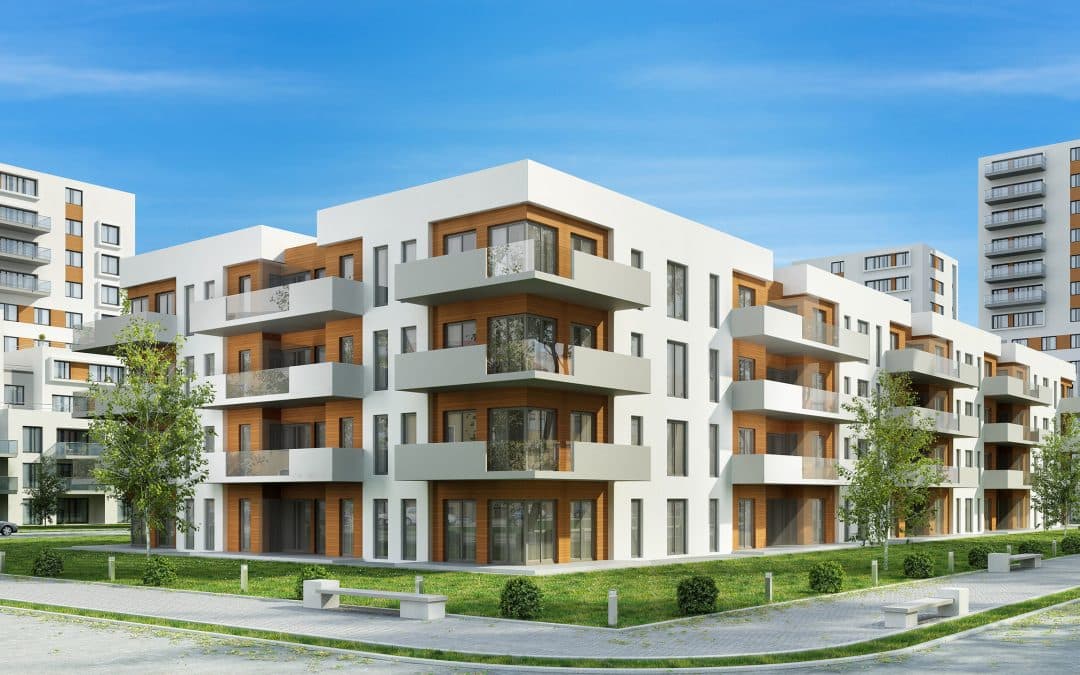In real estate, properties are broadly categorized into two main types: commercial and residential. Each type serves a different purpose and has rules, characteristics, and a unique investment potential.
Whether you’re a seasoned real estate investor, a property owner, or someone looking to enter the field, understanding the differences between commercial and residential properties is crucial.
This article highlights these distinctions, focusing on property use, lease terms, financing options, and the market dynamics that influence both sectors.
Are you considering investing in property but need help deciding whether to go for a commercial or residential property?
Understanding the differences between the two can help you make an informed decision. Commercial and residential properties have distinct features and considerations that can significantly impact your investment strategy and potential returns.
Key Differences between Commercial and Residential Properties
When it comes to commercial and residential properties, there are several key differences to take into account. The first and most obvious difference lies in their purpose and usage.
Commercial properties are specifically designed for business purposes. These include office spaces, retail stores, industrial warehouses, and hotels. On the other hand, residential properties are intended for personal living. These can consist of single-family homes, apartments, condominiums, and townhouses.
Another significant difference between commercial and residential properties is their value. Commercial properties tend to have a higher value than residential properties due to their income potential.
Commercial properties generate rental income from businesses that operate within them. On the other hand, residential properties primarily generate income through rent paid by individuals or families.
The rental potential is another aspect where commercial and residential properties differ. Commercial properties typically have longer lease terms, ranging from 5 to 10 years or more. This provides stability for both the landlord and the tenant.
On the other hand, residential properties usually have shorter lease terms ranging from 6 to 12 months. This allows tenants more flexibility to move out if needed.
Factors to Consider When Investing in Commercial Properties

The Location of a Commercial Property:
Investing in commercial properties requires careful consideration of various factors. One important aspect to evaluate is the location. The location of a commercial property plays a crucial role in its success.
It should be easily accessible, have high foot traffic, and be in an area businesses demand. Additionally, it's essential to consider the area's economic conditions and market trends.
Investing in a commercial property in a thriving business district can lead to higher rental income and potential appreciation.
The Type of Commercial Property
Another factor to consider is the type of commercial property. Different types of commercial properties have other associated risks and potential returns.
For example, investing in office spaces may be ideal in areas with a high demand for corporate offices, while investing in retail spaces may be more profitable in areas with a solid consumer base.
Thorough market research is essential to understanding the demand and potential returns for each type of commercial property.
Factors to consider when investing in residential properties

The Location of a Residential Property
Investing in residential properties also requires careful consideration of various factors. One important aspect to evaluate is the location, which can significantly impact its rental potential and appreciation.
It should be in a desirable neighborhood with access to amenities such as schools, shopping centers, and transportation. Additionally, the area's housing demand must be considered.
Area's housing demand Investing in residential properties in areas with a growing population and limited housing supply can lead to higher rental income and potential appreciation.
Read more about The Key Role of Location in Successful Real Estate Investment
The Type of Residential Property
Another factor to consider is the type of residential property. Different types of residential properties cater to various demographics and have varying rental demands.
For example, investing in single-family homes may attract families looking for more space, while investing in apartments may cater to young professionals or students. Understanding the target market and their preferences can help determine the most suitable type of residential property to invest in.
Rental income potential is also an important consideration when investing in residential properties. Rental rates can vary depending on location, property condition, and amenities.
Rental income potential for commercial properties

Commercial properties have the potential for higher rental income compared to residential properties. This is because businesses are willing to pay higher rents for spaces that can generate profits. Rental rates for commercial properties are typically calculated based on the square meter of the space.
Different types of commercial properties have different rental rates per square meter. For example, retail spaces in prime locations often command higher rental rates than industrial warehouses.
Another advantage of commercial properties is the possibility of long-term leases. Longer lease terms provide stability and predictable cash flow for landlords.
This is especially beneficial for investors looking for a consistent income stream. However, it's important to note that commercial properties may also face higher vacancy risks than residential properties, especially during economic downturns.
Rental income potential for residential properties

While residential properties may generate lower rental income than commercial properties, they still offer investors a steady source of cash flow. Rental rates for residential properties are typically calculated based on factors such as location, property size, and amenities.
In areas with high demand for housing, rental rates can be competitive, especially for properties in desirable neighborhoods.
Residential properties also offer the advantage of a larger target market. The demand for rental housing is generally higher than for commercial spaces. This means residential properties have more potential for consistent occupancy rates and lower vacancy risks.
However, it's important to note that residential properties may require more active management than commercial properties. Landlords of residential properties may need to handle tenant turnover, maintenance, and repairs more frequently.
This can add to the overall management responsibilities and costs of residential property investments.
Risks and Challenges Associated with Commercial Properties
Investing in commercial properties comes with its own set of risks and challenges. One of the main risks is the possibility of high vacancy rates. Commercial properties rely on businesses to occupy the space and generate rental income.
Companies may struggle or close down during economic downturns or industry-specific challenges, increasing vacancy rates. It's essential to conduct thorough market research and assess the demand for commercial spaces in the area before investing.
Another challenge associated with commercial properties is the higher upfront costs. Commercial properties often require more significant investments compared to residential properties.
This includes the purchase price and expenses for renovations, tenant improvements, and ongoing maintenance. Investors should consider their budget and financing options before investing in commercial property.
Risks and Challenges Associated with Residential Properties
Investing in residential properties also comes with its own set of risks and challenges. One of the main risks is the possibility of tenant turnover and vacancy.
Residential properties may experience vacancy periods between tenants, impacting the cash flow and overall return on investment. It's essential to have a plan to minimize vacancy periods, such as marketing strategies and tenant screening processes.
Another challenge associated with residential properties is the potential for repairs and maintenance. Unlike commercial properties, residential properties wear and tear more due to continuous occupancy.
Landlords are responsible for the maintenance and repairs of residential properties, which can be time-consuming and costly. It's important to factor in these potential expenses when calculating the overall return on investment.
Other differences between commercial and residential

Expanding on the fundamental distinctions between commercial and residential real estate, it's essential to delve into other nuanced differences that impact investors, property owners, and tenants alike. These aspects further illustrate each sector's unique challenges and opportunities, from legal and tax implications to market demand and investment scalability.
Investment and Returns
Commercial real estate investors often face higher initial investment costs but potentially reap higher returns due to longer lease terms and the ability of commercial tenants to pay more rent.
Commercial property investments can also offer the allure of passive income through net leases and fewer tenant turnover rates, which can stabilize income.
In contrast, residential real estate investments might have lower entry costs and be more accessible to a broader range of investors, including those purchasing property for the first time.
Financing and Loans
Financing for commercial and residential properties differs significantly. Commercial real estate loans are typically more complex than residential loans. The former often require higher down payments and interest rates, reflecting the perceived risk associated with commercial investments.
Higher down payments and interest rates, reflecting the perceived risk associated with Lenders, may also scrutinize the business potential of a commercial property, evaluating its income-generating ability before approving a loan.
Market Dynamics and Risk
The commercial property market and residential property market react differently to economic conditions. Commercial real estate is often more sensitive to economic downturns as businesses scale back or close, affecting demand for office and retail spaces.
Conversely, residential real estate tends to be more resilient, as the demand for living space remains even during challenging economic times. However, both markets are influenced by factors like interest rates, zoning laws, and building codes.
Property Management and Maintenance
Property management in the commercial sector can be more demanding, involving complex lease agreements, property maintenance, and managing relationships with multiple tenants.
Commercial landlords and property managers must navigate business entity regulations and commercial construction requirements and ensure their properties meet specific business purposes. Residential property management might seem more straightforward.
They are investing in comparison, focusing on tenant relations, property upkeep, and ensuring compliance with residential leases and regulations.
Legal and Tax Implications
The legal and tax frameworks governing commercial and residential properties vary significantly. Commercial real estate is subject to a more complex set of laws and regulations, reflecting its use in business and the broader range of activities it accommodates.
For instance, commercial leases are highly customizable and can include specific clauses related to business purposes, property management, and maintenance costs. In contrast, residential leases are more standardized to protect individual tenants' rights and ensure their living space meets specific health and safety standards.
From a tax perspective, commercial property owners may be eligible for various deductions, including property depreciation, commercial loans, and maintenance costs. Residential property owners also enjoy tax benefits, such as deductions on mortgage interest and property taxes. Still, the specifics can differ based on whether the property is owner-occupied or rented.
Market Demand and Scalability
Different factors influence the demand for commercial and residential properties. Commercial real estate demand is closely tied to the economy's health, business growth, and consumer behavior.
For example, a boom in e-commerce can increase the demand for warehouse and distribution centers, while a rise in remote work might reduce the need for office spaces. Conversely, residential real estate demand is more directly linked to population growth, housing supply, and affordability issues.
Investment scalability also varies between the two sectors. Commercial real estate offers significant portfolio expansion and diversification opportunities within various sub-sectors, such as retail, office, industrial, and multi-family units.
This allows investors to spread risk and capitalize on different market dynamics. On the other hand, residential real estate investing is often seen as more accessible for individual investors, though it can be equally scalable through strategic acquisitions and portfolio management.
Final Thoughts
Investing in commercial or residential properties depends on an investor's financial goals, risk tolerance, and investment strategy. While commercial real estate offers higher income potential and longer extended lease agreements, it comes with challenges, including a higher barrier to entry and increased sensitivity to economic conditions.
Residential real estate may provide a more straightforward path to property ownership and investment but requires understanding the nuances of the residential market, from attracting and retaining tenants to managing property value and maintenance costs efficiently.
Whether you're drawn to the dynamic world of commercial investing or the more stable realm of residential properties, a thorough understanding of the critical differences between these sectors is essential. With the right approach and knowledge, real estate offers a rewarding opportunity to build wealth and achieve financial independence.
Related Articles:
Rental ROI in Istanbul Properties
Commercial Real Estate Market in Istanbul
Commercial and Residential Real Estate in Istanbul's Business Hubs



